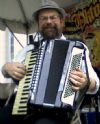|
ESL Forum:
Techniques and methods
in Language Teaching
Games, activities
and teaching ideas
Grammar and
Linguistics
Teaching material
Concerning
worksheets
Concerning
powerpoints
Concerning online
exercises
Make suggestions,
report errors
Ask for help
Message board
|
ESL forum >
Ask for help > Hi dears,Heeeeeeeeeeeeeeelp
Hi dears,Heeeeeeeeeeeeeeelp
|

Naoom

|
Hi dears,Heeeeeeeeeeeeeeelp
|
|
Hi dears,
Thanking you all,ineed your help.Can you give me a perfect rule to show when we pronounce the past ed as /t/ or//d/ or /id/.
You will be much laudable if you send me worksheets.
thanks again, |
13 Nov 2011
|
|
|
|

paddyofarrell

|
|
Pronounce the -ed ending /t/ after all unvoiced sounds, except /t/ e.g. jumped, washed. Pronounce the -ed ending /d/ after all voiced sounds, except /d/ e.g. mailed, played. Pronounce the -ed ending /id/ after /t/ and /d/ e.g. painted, handed. I �m sorry, but I don �t have a worksheet handy to send to you. There is a very simple and clear exercise on this in Headway Intermediate if you have access to this book. |
13 Nov 2011
|
|
|

honeybel

|
I found a ws for you in the site. I hope it �s usf. here you are:
http://www.eslprintables.com/printable.asp?id=442363#thetop
|
13 Nov 2011
|
|
|

Naoom

|
|
Well.Thats what i am looking for.Thanks alot dearest. |
13 Nov 2011
|
|
|

yanogator

|
|
Hi, Naoom, I don �t know if this advice will be useful for you, but when I teach the -ed ending, all I teach is whether to pronounce the "e" or not. It is impossible to pronounce it /d/ after an unvoiced sound and impossible to pronounce it /t/ after a voiced sound - well, not quite impossible, but not natural. Therefore, all the student needs to know is whether the -ed is pronounced as a separate syllable or not. This makes it easier for the students to remember. Bruce |
13 Nov 2011
|
|
|